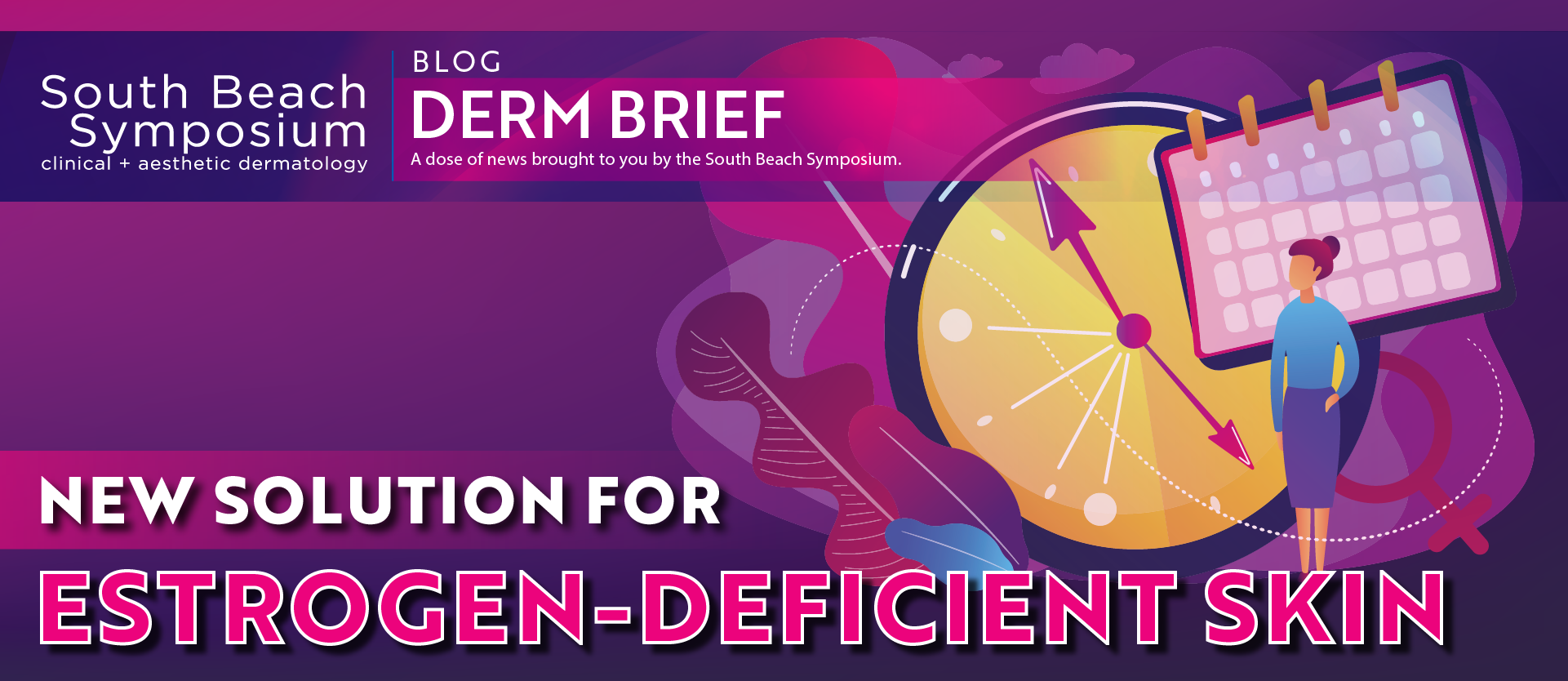Approximately 6,000 women enter menopause every day in the United States and current estimates project that about 46 million women will be over the age of 55 by 2020. While mean life expectancy has increased significantly, the onset of menopause has only been delayed by about 5 years, implicating that women will be living postmenopausally close to 25 years longer now than in previous generations.
With menopause comes a decrease in estrogen – an essential component of skin function, health, and wellness – which leads to rapid proliferation of unwanted aging skin symptoms. Treatment options for estrogen-deficient skin often carry adverse side effects and substantial health risks, however, recent research indicates the potential of a new compound to mitigate these harmful consequences while improving post-menopausal skin symptoms.
Estrogen-Deficient Skin and Menopause
Although many skin changes in aging women result from sun damage, environmental pollutants, and chronological age, the loss of estrogen impacts skin health even more significantly. Many mechanisms contributing to skin health and appearance such as skin plumping, glycosaminoglycan development, and collagen and elastin production rely on estrogen binding. Decreases in collagen and IGF-1 production found in estrogen-deficient skin can result in significant skin concerns among post-menopausal women, including a loss of skin elasticity, hydration, as well as thickness. Although many women associate dryness, wrinkling, skin thinness, and itching with aging, the underlying cause is often menopause and corresponding estrogen deficiency.
Treatment Options
To date, therapeutic modalities for estrogen-deficient skin include oral and topical estrogen-based products aimed at improving post-menopausal symptoms. However, they carry significant negative effects. Current treatment options can result in increased levels of systemic estrogen, which raises the possibility of unwanted hormonal side effects, and increased risks of hyperplasia of the uterine endometrium, stimulation of breast tissue, as well as cardiovascular disease.
According to dermatologist, and SBS faculty member Dr. Diane Berson, who presented “A New Cosmeceutical for Estrogen Deficient Skin” at the American Academy of Dermatology’s (AAD) 2019 spring meeting, the solution is a topical agent which mimics estrogen action without systemic side effects. Recently, a new cosmeceutical agent has appeared on the market with the potential to benefit estrogen-deficient skin and mitigate unwanted consequences – methyl estradiolpropanoate.
Methyl Estradiolpropanoate Treatment
The non-hormonal estrogen receptor agonist methyl estradiolpropanoate (MEP) interacts with estrogen receptors on the surface of cells, stimulating collagen and elastin production and increasing hydration of the dermis. Unlike estradiol, MEP enters the bloodstream as an inactive metabolite and exits the body without absorption, providing the benefits of estrogen-based products with none of the associated side effects.
Carrying none of the potential risks of a hormone-based therapy, MEP may soon become a patient preferred treatment option. Currently, manufacturing companies are developing MEP technology to become widely accessible and beneficial, hoping to pave the way for non-hormonal treatments for estrogen-deficient skin.
Safety and Efficacy of Topical MEP
Studies have shown that MEP can significantly improve menopause-related skin symptoms. A double-blind, randomized pilot study examined the efficacy and tolerability of topical MEP as an anti-aging cosmeceutical in women who had not undergone hormone replacement therapy. In the safety study, a cohort of 40 amenorrheic women applied an MEP product to the face twice daily for 14 weeks. Blood samples were taken at baseline and 12 weeks into the study to evaluate MEP and inactive metabolite measures. At week 12, only one of the participants had inactive metabolite levels above the quantifiable limit while no adverse effects were reported and patients rated product tolerability as “excellent.”
Investigators then examined a cohort of 60 amenorrheic women with no hormone replacement therapy history in the efficacy study. Patients applied the MEP product twice daily for 14 weeks, at which point researchers found statistically significant improvement from baseline in dryness, laxity, atrophy, and dullness. The study revealed that MEP technology can be a safe and effective novel treatment with estrogen-mimicking cutaneous effects in postmenopausal women.
Increasingly, the patient population is expected to comprise a larger proportion of women after menopause. A growing aging population will shift treatment demands, as evidenced by the development of new post-menopausal therapies. As such, dermatologists will be tasked with treating estrogen-deficient skin in hopes of mitigating unwanted signs of aging while evading adverse effects. The forthcoming MEP technology and products implicate promise of optimized treatment options, with the potential to reverse symptoms in estrogen-deficient skin without hormonal side effects.
















